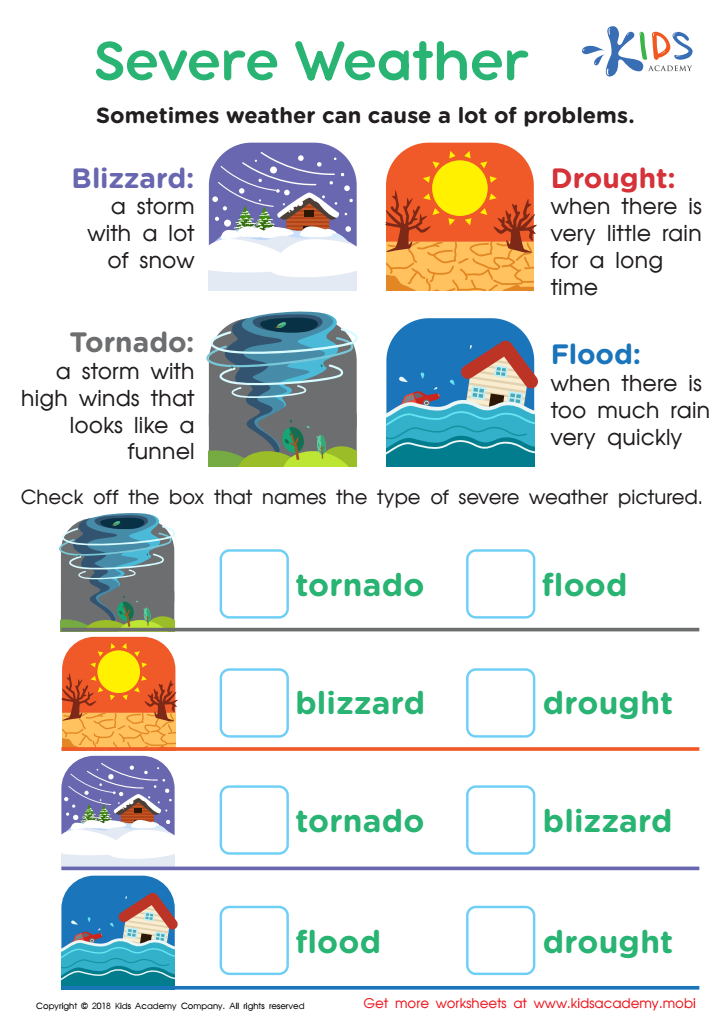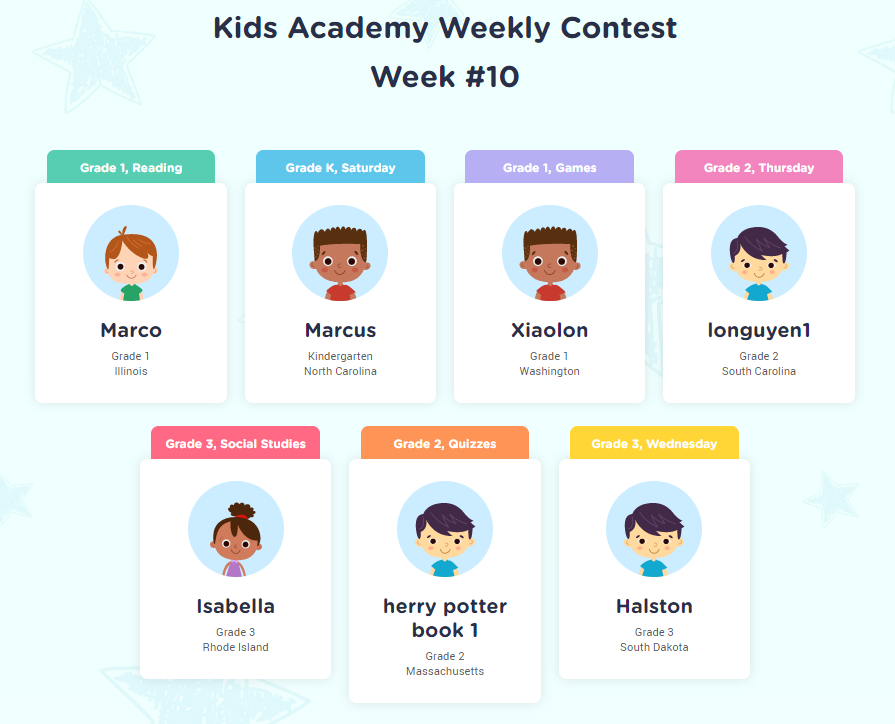Understand severe weather types Worksheets for Kids
1 filtered results
-
From - To


Severe Weather Worksheet
Question/Answer
How does the mastery of the Understand severe weather types skill affect a student's performance at an early age?
Mastery of the "Understand severe weather types" skill at an early age can significantly enhance a student's performance by fostering a strong foundation in science literacy, critical thinking, and safety awareness.
How to test a Kindergarten student’s Understand severe weather types skills?
To test a Kindergarten student's understanding of severe weather types, utilize interactive activities such as matching games where children pair weather symbols with their names (e.g., tornado, hurricane, blizzard). Follow with simple, scenario-based questions ("What would you wear in a snowstorm?") to gauge their comprehension. Incorporate storybooks and videos about severe weather for visual and contextual reinforcement.
Why is the Understand severe weather types skill important for Kindergarten students?
The Understand severe weather types skill is important for Kindergarten students because it helps them recognize dangerous weather conditions, understand basic safety measures, and reduces their anxiety during such events. Early knowledge empowers them to respond appropriately and stay safe during severe weather, fostering a sense of security and preparedness from a young age.
 Assign to the classroom
Assign to the classroom











